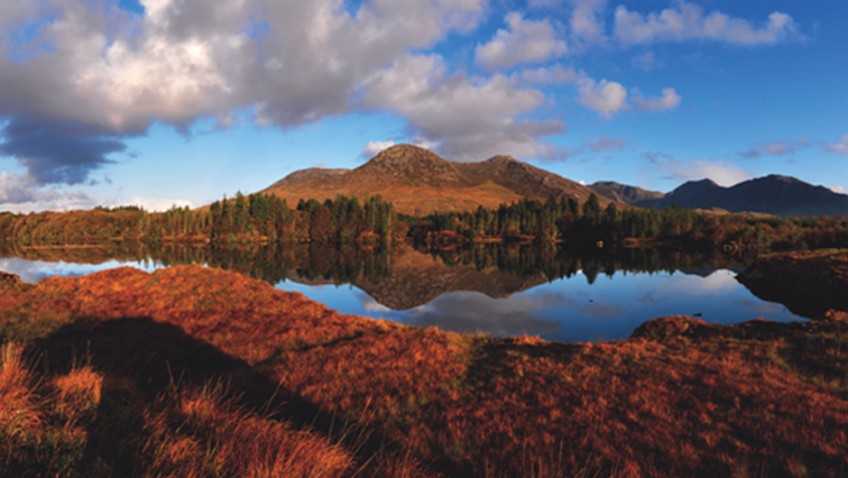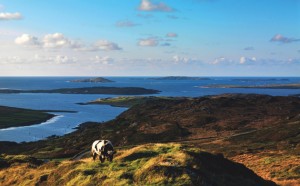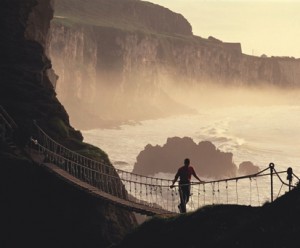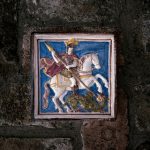Aidan sawley explores County Galway and Ireland’s Wild Atlantic Way
If rugged coastline is what you want, spectacular scenery is what you like to see, the mighty Atlantic Ocean holds you in thrall, exploring remote but beautiful places is what you like, and driving is your passion then a visit to Ireland to explore the Wild Atlantic Way is something that you should add to your ‘bucket list’ right away.
What is it?
Well, it’s simply described as the world’s longest defined coastal touring route stretching from the town of Derry in the north of the country and taking in the most northerly point in Ireland, Malin Head in County Donegal all the way round the West Coast of the Country and finishing in the fishing village of Kinsale on the south coast – if you were to travel it all then you would have covered some 1,600 miles.
Our trip
With only three days to explore this magnificent route it was impossible to see and do it all, so we first headed for the vibrant city of Galway – a city that can trace its history back some 800 years to the merchant families, known as the 14 tribes of Galway who brought prosperity to the area.
Nowadays, Galway is a bustling city and tourist destination in its own right and is also the gateway to County Galway and Connemara – a region that is famous for its spectacular scenery; dominated by the mountain range known as the Twelve Bens. We spent an afternoon wandering the streets and taking in the atmosphere of the City before our drive to Cashel Bay which was our first overnight stop.
What strikes you about the drive out to Cashel is not only the sheer beauty of the scenery, but also the feeling of space and isolation that you soon get as you travel across the landscape. On a beautiful sunny day, the views were perfect, but I would also imagine it would be just as memorable if the weather was inclement – after all, this coastline is at the mercy of everything that the Atlantic Ocean can throw at it. And it is this that gives it the character and beauty that you see at every turn.
Spare a thought for the people who live here, while life in the summer looks idyllic, in the winter it can sometimes be harsh. Many cottages are remote, peat still forms a major source of heat for many, and it’s an area where you will often hear the Irish language spoken. But it is this that gives it the beauty as you drive through the area.
Day two saw us leave Cashel Bay and head towards Roundstone – a small but pretty fishing village with its harbour and stunning coastal scenery – a lovely place to stop off and have a cup of tea and stretch your legs. It was then across to Clifden Town, the so called capital of Connemara, via Derrygimlagh a place famous in the early years of the last century for being the location of Marconi’s first ever transatlantic wireless station. If that wasn’t enough fame for a small village it was also, in 1919, the place where Alcock and Brown landed their first ever transatlantic flight!
Clifden was the dream of John D’Arcy who founded the town in 1812 at the tender age of just 26, the D’Arcys were one of the fourteen founding families of Galway and had considerable land holdings in the area – John died in 1839 with his dream achieved although within 20 years the family’s holdings in the area had to be sold as a result of the Great Famine and the D’Arcy fortunes were lost.
Today, Clifden is a bustling town and is the administrative region for the area – it relies heavily on its tourist trade for its prosperity and is well worth a visit. Perhaps one of the highlights is taking the sky road out of the town – this is only 11km in length, but it is as spectacular a drive as any you will find in the UK. Climbing out of the town you get a fantastic view over the islands and coastline – it really is quite awe inspiring!
The Wild Atlantic Way
The best way to see the scenery is to follow the route of the Wild Atlantic Way – it’s well signposted and easy to follow. What’s more there are plenty of stopping off places – perhaps a paddle on one of the clean and almost deserted sandy beaches that you will find along the way, perhaps drop off in some of the more remote villages that hug the coastline such as Cleggan, where you can take the ferry across to Inishbofin, or perhaps take in the splendour of Kylemore Abbey. Whatever you chose to do along the way you won’t be disappointed. And don’t worry – you can’t get lost – the route is so well signposted!
One thing is for sure – three days wasn’t enough to fully explore this fantastic coastline – I’ll certainly be going back again next year under my own steam to explore some more!
Ireland’s Blue Book
Is a collection of Irish country house hotels, manor houses, castles and restaurants. Located throughout the island of Ireland these hotels are some of the most stylish and unique places to stay in the country. No two properties are the same and they are all independently owned, which ensures that they reflect a diversity of style and character.
On our first night we stayed at the Cashel House Hotel located in the village of Cashel about an hour away from Galway. The hotel is described as a perfect romantic hideaway – and before becoming a hotel was formerly one of Connemara’s most gracious homes. It sits in its own 50 acres of gardens on the beautiful coastline of Cashel Bay and has been owned by the McEvilly family for 50 years.
Our second night was spent at Rosleague Manor just outside the village of Letterfrack. This is a beautifully situated Georgian house that overlooks Ballinakill Bay and is just a mile from the Connemara National Park. Owned and run by the Foyle family, the hotel is hidden in 30 acres of secluded woodland on the ocean’s edge.
Further information and full details of both hotels can be found at www.irelandsbluebook.com
Getting there
Travelling to Ireland is relatively straightforward. There are plenty of flights to Irish airports from across the UK, whilst if you want to take your own car, ferry sailings are also commonplace and frequent. Operators are too many to list – to check out who goes where the best place to go is the Tourism Ireland website which can be found at www.ireland.com.






